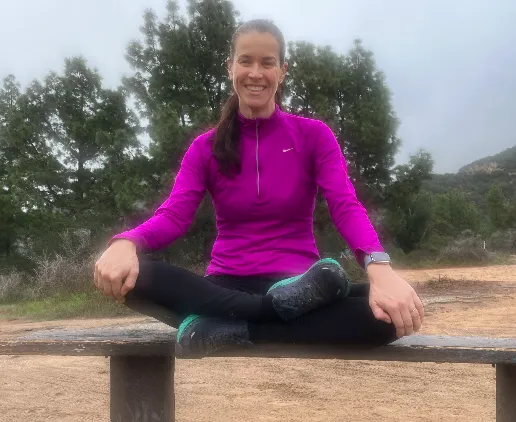
when movement feels messy: shifting from mindless exercise to something that actually feels good
There’s no denying that exercise can do incredible things for your health.
We’ve all seen the research and heard the laundry list of benefits—lower risk of chronic illness, improved mood, stronger bones, more energy, better sleep. All the good stuff. And it’s true.
But here’s the part no one really teaches us: even exercise can get tangled up in unhealthy patterns. Especially when it stops being something you enjoy and starts becoming something you feel like you owe.
For a long time, I thought I was being “healthy” because I worked out daily. Sometimes twice. I had an Excel sheet. I logged calories. I planned workouts around food and food around workouts. I was disciplined, dedicated, and on the outside, pretty damn fit.
But on the inside? I was tired. Not just physically—mentally, emotionally, even spiritually. My movement wasn’t helping me feel more connected to my body... it was helping me disconnect from it.
when exercise becomes another form of control
I didn’t start out this way. When I was a kid, exercise was pure joy. I ran around the soccer field with my friends, swam laps at the pool, biked for hours in the summer—just because I wanted to. Not because it burned calories or "earned" me dessert.
But somewhere along the way, that joyful energy got hijacked by comparison. Body image. The desire to look a certain way, shrink a certain number of inches, control what felt so wildly out of control—my body.
And that’s when movement stopped being playful and started being punishment.
If I ate “too much,” I added an extra workout.
If I skipped a day, I was “lazy.”
Rest days felt indulgent.
Running meant burning.
Strength training meant shrinking.
That’s not health. That’s hustle culture disguised as wellness.
so... what actually is unhealthy exercise?
Unhealthy exercise isn’t just about the amount—it’s about the intention behind it. You could be hitting the gym five days a week and still have a totally balanced approach. Or you could be walking daily and still be stuck in a restrictive, compulsive loop.
Mindless, unhealthy movement often looks like this:
Forcing a workout even when you’re exhausted
Avoiding social plans so you don’t “miss a session”
Feeling guilty if you skip a day
Exercising to “burn off” a meal or “earn” food
Ignoring your body’s cues in favor of rigid plans
Choosing only the workouts that torch the most calories
And let me just say—if that’s where you’re at right now, it doesn’t mean you’ve failed. It means you’ve been taught to measure your worth in burned calories and step counts. You’re not broken. The system is.
what mindful movement actually looks like
Let’s flip the script. What if movement didn’t come from guilt? What if it wasn’t about shrinking or fixing, but supporting?
Mindful movement is about tuning in, not checking out.
It’s moving your body in a way that feels energizing, not depleting. It’s doing a tough workout because you want to challenge yourself—not because you’re punishing yourself for last night’s pasta.
It’s skipping a workout when your body needs rest... and not feeling like a failure because of it.
Mindful movement asks you to:
Pay attention to how your body feels today
Choose movement that matches your energy
Let rest be part of your plan—not a guilt trip
Reconnect with the joy of moving, not just the metrics of progress
the checklist that changed everything for me
When I was studying to become a Certified Intuitive Eating Counselor, I was introduced to an exercise checklist by Rachel Calogero and Kelly Pedrotty—and wow. I honestly wish teenage-me had this taped to her mirror.
Here are just a few questions from that list that still stop me in my tracks:
Am I exercising because I feel guilty about what I ate?
Am I ignoring something else I need—like rest, or joy, or connection?
Do I think my body needs to be punished?
Did I actually enjoy this movement the last time I did it?
Am I choosing this workout from love... or from fear?
The point isn’t to guilt yourself for the answers. It’s to get curious. To notice the patterns you might not have realized were running the show.
how to start making the shift—gently
If you’re thinking, “okay, great... but now what?”—I hear you. This shift isn’t about throwing away your running shoes or swearing off structured workouts. It’s about making space for more freedom inside of your routine.
The next time you move your body, try pausing first.
Ask yourself, “What would feel good today?”
Maybe it’s a long walk. Maybe it’s a strength session. Maybe it’s sitting on the couch in fuzzy socks with a book. All of those options are valid.
Give yourself permission to rest. Permission to enjoy. Permission to move because you want to, not because you feel like you should.
Because when you start choosing movement from a place of respect, not resentment—your entire relationship with your body starts to heal.
And suddenly, exercise isn’t something you have to do.
It becomes something you get to do again.
